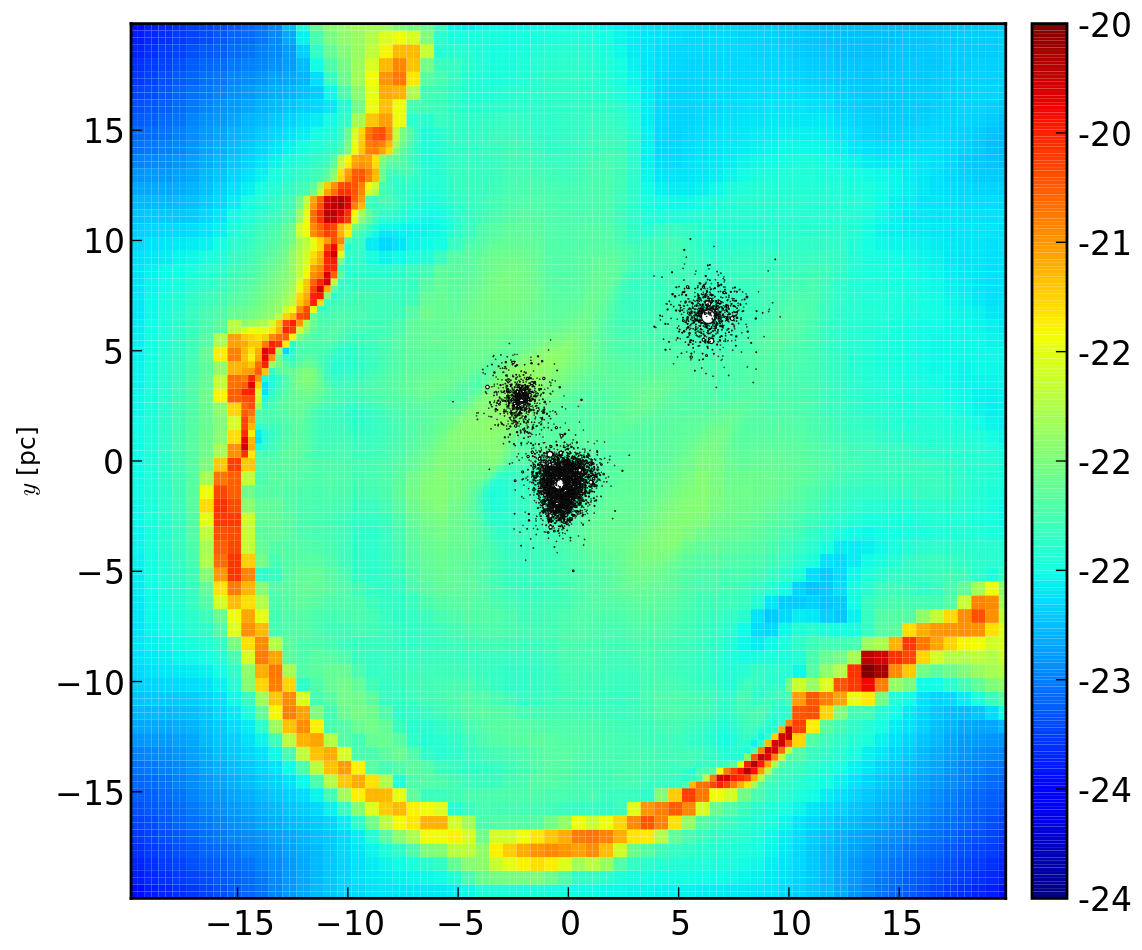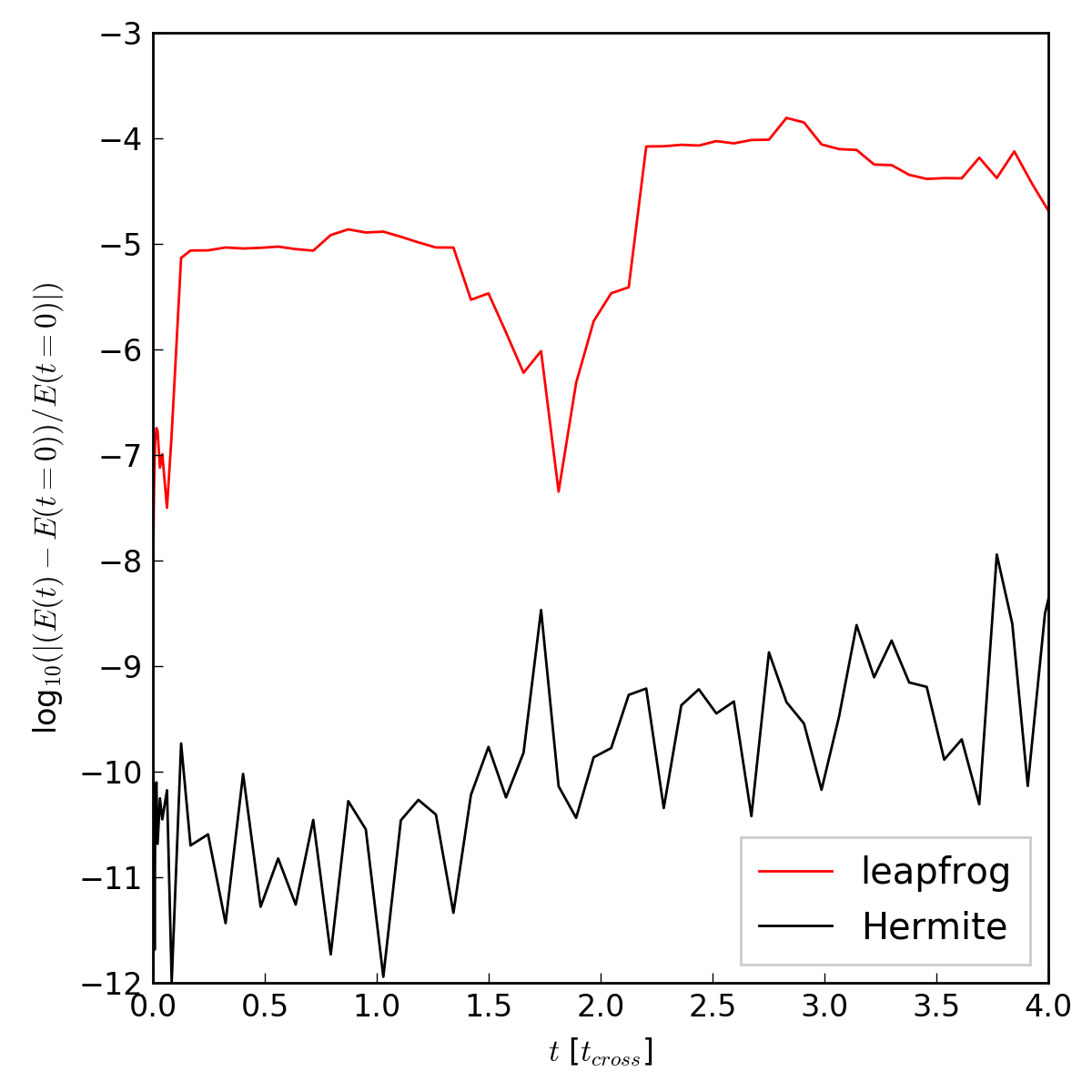Implementing Hermite predictor-corrector integrator to AMR code FLASH
Giant molecular clouds are far from being in equilibrium. At the same time when molecular clouds condense and gain mass, they form stars, and the newly formed stars heat and erode a part of the cloud by their feedback. Thus, the density of a molecular cloud differs by many order of magnitude from diffuse outer parts through dense cores to protostars. When numerically modelling the cloud, the increasing density contrast during gravitational collapse necessitates still higher resolution, which from certain stage on, leads to unacceptable computational costs. This problem can be overcome by substituting the densest gas by sink particles (Bate et al. 1995). The sink particles further accrete, and interact gravitationally with each other and the gaseous component. Although the leap-frog scheme is widely used for integrating sink particles, we experiment with Hermite predictor-corrector integrator with individual time-steps organised to blocks (Makino & Aarseth 1992; Aarseth 2003), and splitting regular and irregular time steps between the interaction with gas and other sinks. Our implementation calculates gravitational interaction between gas and sink particles via an octal tree, while the interaction between particles, which are often close to each other, is calculated directly. It appears that this scheme presents a significant advantage over the leap-frog algorithm when using in hydrodynamic simulations because it saves the communication cost between processors substantially.The Hermite integrator is implemented in MHD code FLASH, where it is able to calculate relatively cheaply models up to several thousands of sink particles. The sink particle module is coupled to stellar evolutionary tracks and feedback modules including stellar winds, ionising radiation and supernovae, enabling us to study the star formation in molecular clouds and feedback self-consistently.


(bottom) Comparison of error in mechanical energy $E$ between leap-frog and Hermite integrator as a function of crossing time for the same star cluster. The Hermite integrator is not only more accurate but also significantly faster.